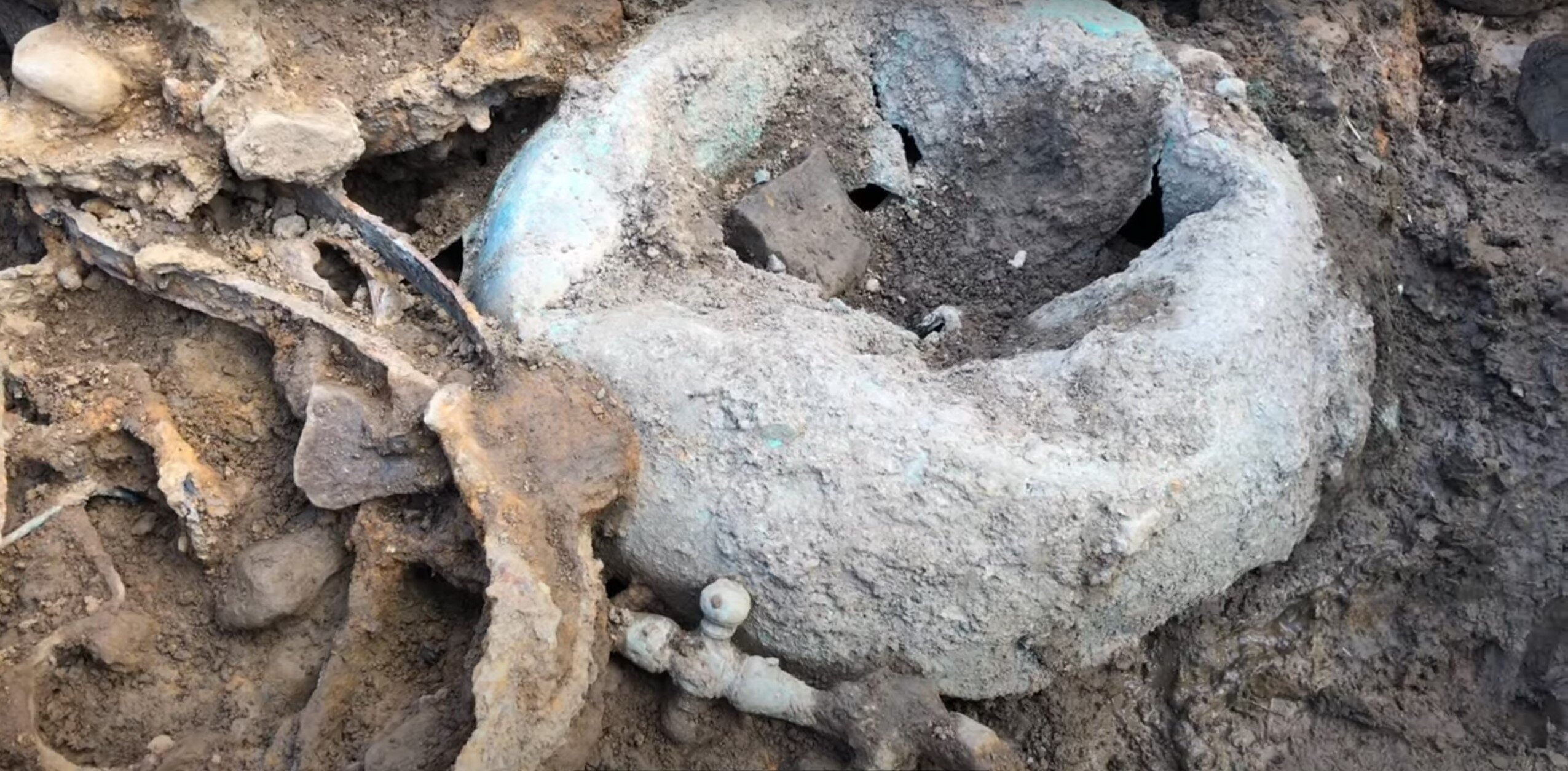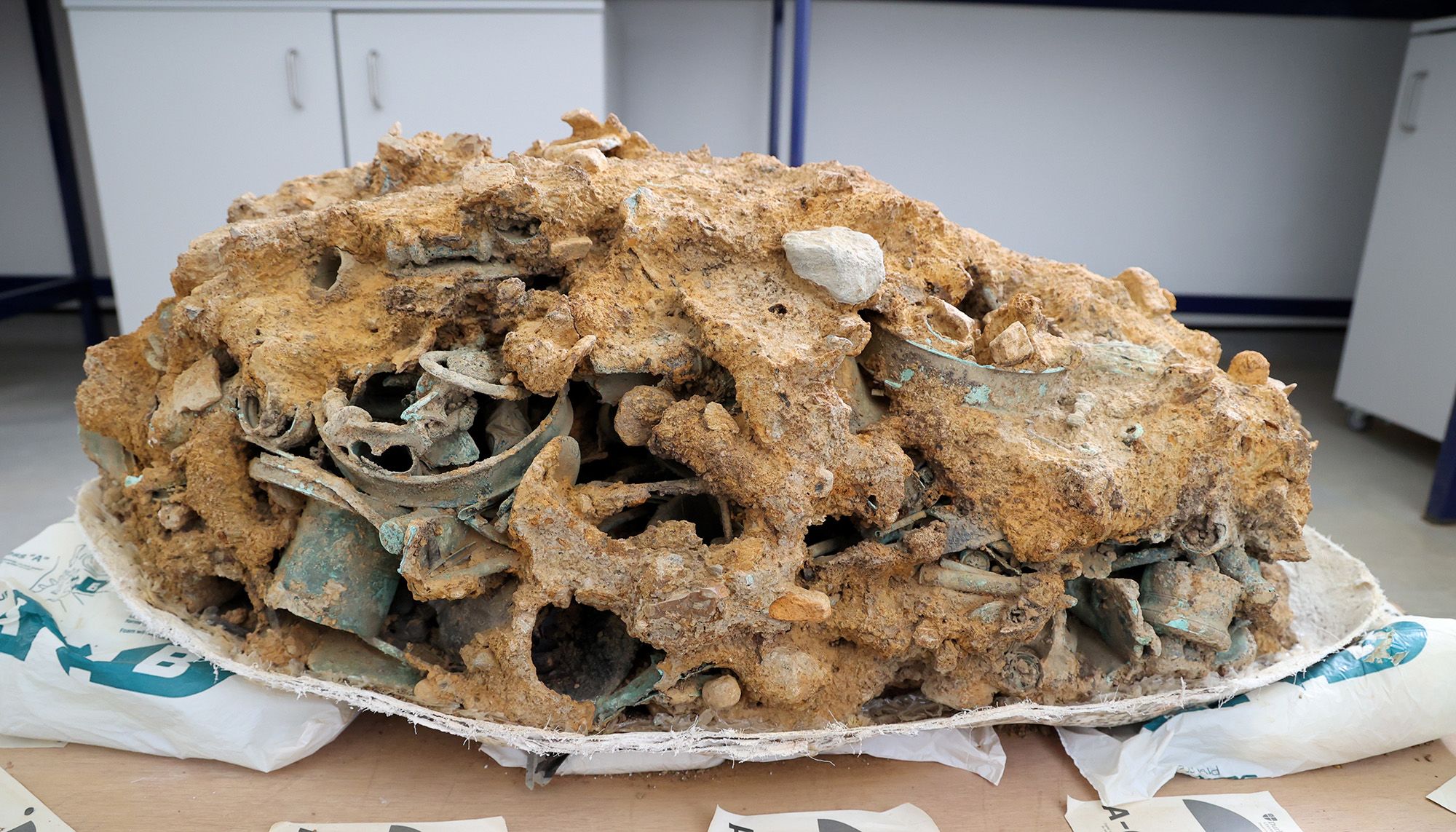The Melsonby hoard, an extraordinary collection of over 800 Iron-Age metal artifacts, was unearthed in December 2021 near Melsonby, North Yorkshire. This discovery is a major milestone in British archaeology, as it provides new insights into the technological and cultural advancements of Iron-Age Britain.
More than just an accumulation of ancient objects, the hoard challenges established views of the period and calls for a reassessment of historical narratives. It highlights the wealth, craftsmanship, and extensive connections of Iron-Age Britons with the wider European world.
Evidence of Trade, Cultural Exchange, and Ritual Practices in Iron-Age Britain
The artifacts found at Melsonby suggest a level of connectivity far beyond what was previously assumed for northern England. Imported Mediterranean materials and the discovery of a European-style four-wheeled wagon indicate that the region was not isolated but actively engaged in long-distance trade and cultural exchange.
The hoard is believed to be linked to the Brigantes tribe, who dominated northern England around the first century BC, coinciding with the Roman conquest under Emperor Claudius. This suggests that Iron-Age societies in Britain were more sophisticated and interconnected than traditionally thought.

The sheer scale of the Melsonby hoard sets it apart from typical Iron-Age discoveries. It includes remains of seven four-wheeled wagons and two-wheeled chariots, along with harnesses for at least 14 horses, 28 bent iron tires, ceremonial spears, and ornate cauldrons.
The presence of these objects aligns with known Iron-Age ritual practices, where metalwork was often deposited in rivers and bogs to mark significant events. The Melsonby find appears to be a land-based counterpart to such rituals, with items potentially deposited to honor the dead or to demonstrate elite status.
Artistic Influences, Ritual Practices, and the Importance of Responsible Archaeological Excavation
The craftsmanship in the hoard reveals a blend of artistic styles, with horse harnesses featuring Mediterranean coral and colored glass, and cauldrons that merge Mediterranean and Iron-Age designs. This tangible evidence of cultural exchange further dispels the notion of an isolated Britain.
Many artifacts show signs of deliberate burning or breaking before burial, a practice known as “ritual killing.” This could signify an elite display of wealth, where valuable objects were sacrificed as offerings, or it might be linked to funerary traditions, where items were burned on a pyre before burial.
The discovery of the hoard was made possible through responsible metal detecting by Peter Heads, who immediately alerted archaeologists instead of disturbing the site himself. This allowed experts from Durham University and the British Museum to properly excavate and analyze the objects using advanced scanning techniques.
The hoard, valued at £254,000, is now the focus of a fundraising campaign by the Yorkshire Museum to ensure its preservation and public display. As research continues, the Melsonby hoard stands as a testament to the power of careful archaeological practice in uncovering Britain’s rich and complex past.


